Preservation Park Opens Downtown
The new park, located in The Brewery, honors area's blue ribbon history.
Downtown Milwaukee has a new park. The pocket park known as Preservation Park is located in the heart of the former Pabst Brewing Complex, at 925 W. Juneau Ave., and honors the legacy of the one-time brewing giant.
The area today has been largely redeveloped, following Pabst’s abrupt closing in 1996. Preservation Park is one of the final pieces in resurrecting the area, a project started by the late Joseph Zilber in 2006.
Zilber was discussed just as much as the park at a grand opening ceremony held Friday afternoon. With many members of the Zilber family in attendance, Zilber Ltd. executive vice president John Kersey praised the many people responsible for bringing the redevelopment to life. Those getting credit included park designer David Hill, Brewery project manager Dan McCarthy, long-time Zilber vice president Mike Mervis, and Jim and Karen Haertel, who own and operate Best Place and originally secured a purchase option on the entire Pabst complex way back on September 11th, 2001.
Mayor Tom Barrett was effusive in his praise for the project, and the role it has played in transforming Downtown. “I do not think the arena, that all that development would have occurred without this investment,” he said.
Barrett singled our Joe Zilber for praise in transforming the area, noting “he gave back more than he ever received from us.” Zilber stepped in to redevelop the complex following the Common Council’s rejection of a development scheme to turn the complex into an entertainment complex.
For more on the complex, see my July round-up on all the active projects in the area.
Park Design
The park, designed by David Hill, is not very large. City records list it as 9,563 square-feet in size.
The key feature of the park is an 87-feet long, 12-foot wide walkway made of rusted Corten steel. A timeline of the Pabst Brewery, dating back to its origins as Best and Company, is cut into the panels and illuminated from underneath. The walkways runs along W. Juneau Ave.
Adding significant interest to the timeline are a series of memory boxes installed in the panels. The memory boxes are 12 inches deep and contain memorabilia from various periods in the timeline. A thick glass cover is flush with the steel panels, allowing visitors to safely walk on them.
Both the panels and memory boxes are slip resistant, a feature that was successfully tested as rain fell on the park’s unveiling.
An open grass area is behind the walkway and occupies a large amount of the park. Trees line the park’s border.
This is actually the second park to be developed in the former brewery. The first, Zilber Park, which opened in 2009, is located a few buildings north of Preservation Park along N. 10th St. and is now routinely used for weddings (including mine) and other events.
Both parks were designed by Hill, who also designed a small, unnamed park behind the UWM Zilber School of Public Health and the complex’s streetscaping. Hill serves as the chair of Auburn University’s Landscape Architecture program in Auburn, Alabama. Hill, who now does his private design work through his firm HILLworks, previously worked for D.I.R.T. Studio.
The Pabst Mansion and Milwaukee County Historical Society assisted in designing the timeline and curating the artifacts included in the park.
The parks at The Brewery are owned and maintained by the area Neighborhood Improvement District. The district is a self-taxing body of nearby properties. A deed restriction ensures that they are operated as public parks.
The park was paid for with contributions from Zilber and the city.
Photos
If you think stories like this are important, become a member of Urban Milwaukee and help support real independent journalism. Plus you get some cool added benefits, all detailed here.
If you think stories like this are important, become a member of Urban Milwaukee and help support real, independent journalism. Plus you get some cool added benefits.
Political Contributions Tracker
Displaying political contributions between people mentioned in this story. Learn more.
- November 30, 2015 - Tom Barrett received $450 from Mike Mervis
Eyes on Milwaukee
-
Church, Cupid Partner On Affordable Housing
 Dec 4th, 2023 by Jeramey Jannene
Dec 4th, 2023 by Jeramey Jannene
-
Downtown Building Sells For Nearly Twice Its Assessed Value
 Nov 12th, 2023 by Jeramey Jannene
Nov 12th, 2023 by Jeramey Jannene
-
Immigration Office Moving To 310W Building
 Oct 25th, 2023 by Jeramey Jannene
Oct 25th, 2023 by Jeramey Jannene


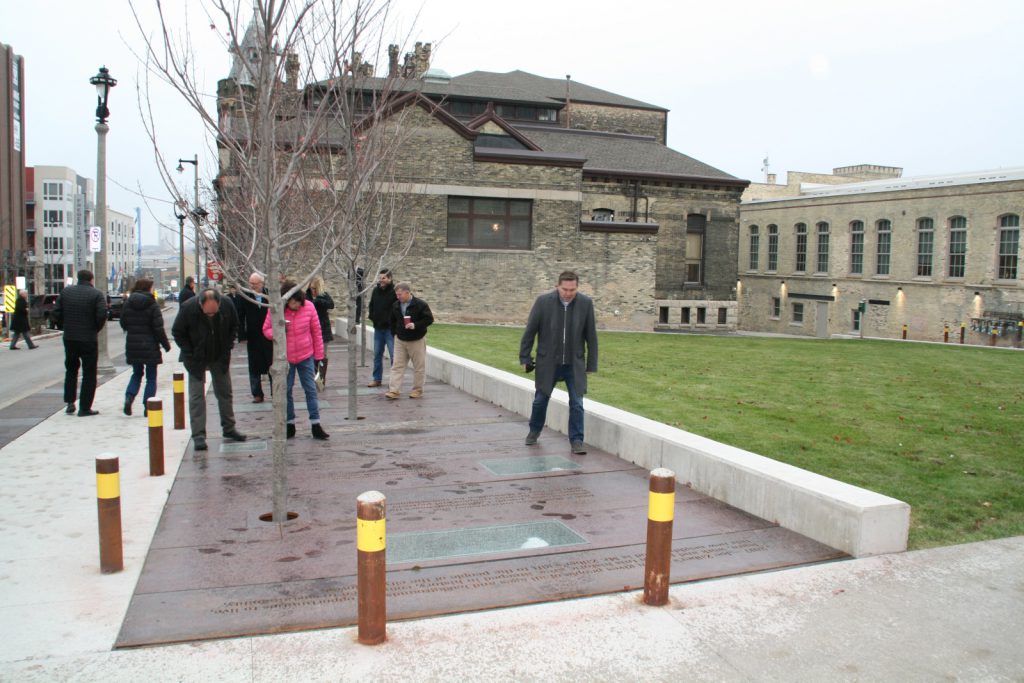
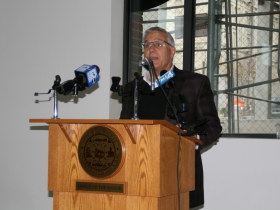
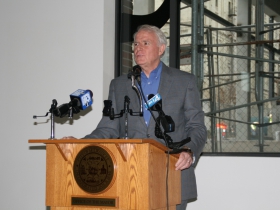
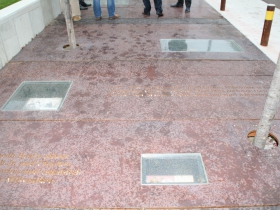
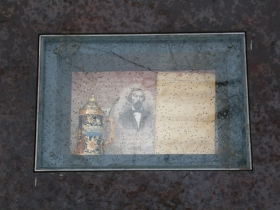
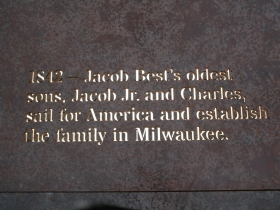
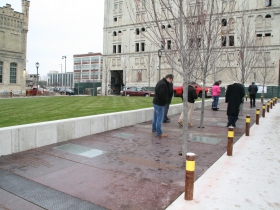

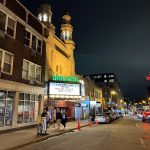
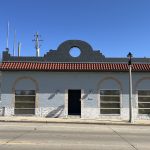
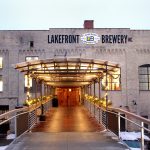




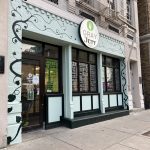
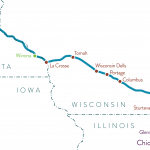





That was quite the “good news/bad news” day for the Haertels.
A Brewery-related question: Does anyone know why there are big holes along the sides of some streets there? At first, I thought they would be filled in and planted, maybe with big trees–but no, they seem to be permanent. IMO, they’re ugly, and I would think they’d be a colossal safety and liabiility concern.
@Jeff – Are you referring to the bioswales? They’re to store water onsite instead of sending it into the sewer system. They’re a part of the overall environmental plan that makes the neighborhood qualify for a LEED Platinum certification.
I can’t speak to their safety, or lack thereof, but anecdotally I’ve never seen any evidence that someone has fallen into one.
I love parks in the middle of the city.
Could use a few benches tho.
The Brewery in Milwaukee is one of the great urban success stories of the decade. The City owes a tremendous debt of gratitude to Zilber for his “organic” approach to its development, as opposed to earlier plans for an entertainment district called Pabst City. That would have been awful. I was back in Milwaukee a couple weekends ago and took a frigid self-tour of downtown, including The Brewery.
I like that the park is called “Preservation Park,” because what Zilber did was in the best sense, preservation. Thoughtful reuse of older buildings and integration of new ones that complement, don’t mimic the old. Great human scale. Truly mixed use.
I think the park, itself, could use a few more trees along its east and south perimeters. The lawn-style of the park is great. I agree with Molly O. about benches. And, the older I get, the less apt I am to bend over to try to read some of the content inset into the glass boxes in the ground. 🙂
Amazing and wonderful hardscape design. I give zero on green space design. When I saw the excavation a while back I thought what a wonderful Green Infrastructure – as in rain water capture and Combined sewerage district overflow mitigation- design. That seems not to be the case. Honoring the past I will support all the time. Forgoing the future for my three grandchildren I cannot support. As for lawn, perhaps a visit to the Victory Garden Initiative website or Facebook would be a place to start: Move Grass: Grow Food! I was talking with a group tonite about the difference between anger and outrage. While my outrage over this forgetfulness of the future does not match some other feelings of outrage over other issues in MKE, it is still close to a 9. The forgetfulness dis ease is somewhat mitigated by…
Thanks to Mr. Jannene for referencing the usefulness of those “ugly and hazardous” holes in the ground in the Brewery area.
and…
Reflo: Sustainable Water Solutions has a MKE water app that you can download and hear more stories about rainwater mitigation in the Brewery area: Solin WWTN:
“Water Story MKE is a free, place-based public engagement app being developed through Reflo-Sustainable Water Solutions, to explore both the history of human engagement with water in Milwaukee and the state of water in Milwaukee today. It also opens up conversation about a sustainable water future. Milwaukee has a rich collection of water stories. The game has five pilot sites that explore Bradford Beach, Pumphouse, Lakefront Brewery, the Brewery Neighborhood, and Cream City Farms @ Walnut Hill for both their interesting water histories and their green infrastructure. Players earn points from their engagement with Milwaukee’s water stories and are invited to share their stories about water on the game platform.” See: http://refloh2o.com/water-story/
We obviously need to have a conversation about the past informing the present to create the future. Hope this helps!